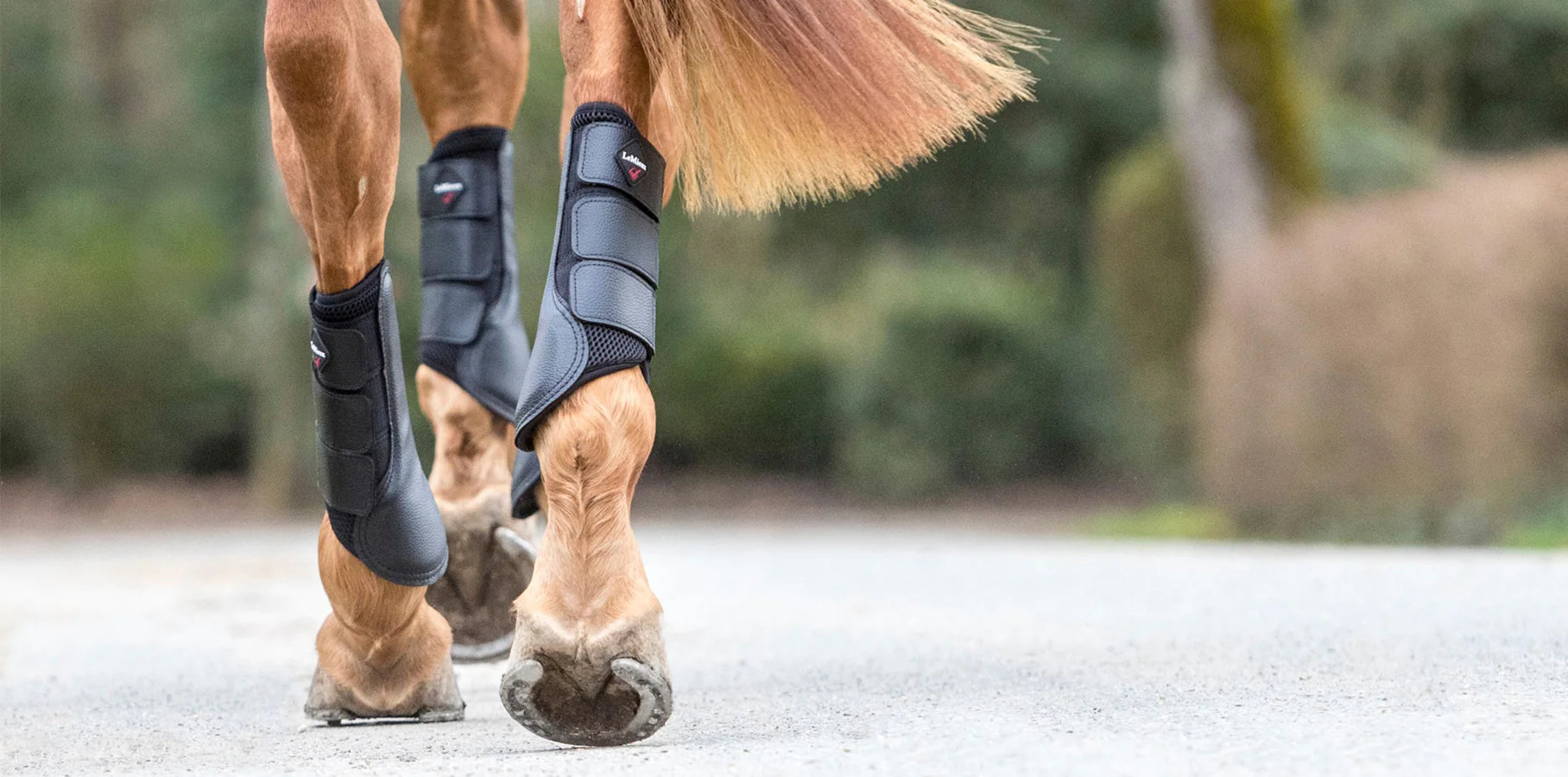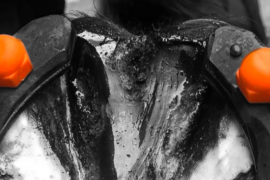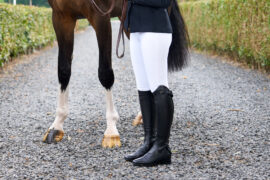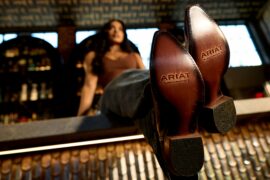Buying your four-legged friend a pair of horse boots is not as simple as it sounds, especially with the vast amount of equestrian boots available on the market. Manufacturers tend to design horse boots for specific parts of the leg, so it’s important you know what each boot will protect, and which disciplines they are intended for.
To make the decision a little easier for you, we have compiled a list of popular horse boots, with detailed descriptions, features and benefits of each. Take a look below and discover which horse boots you need in your tack room.
Brushing Boots
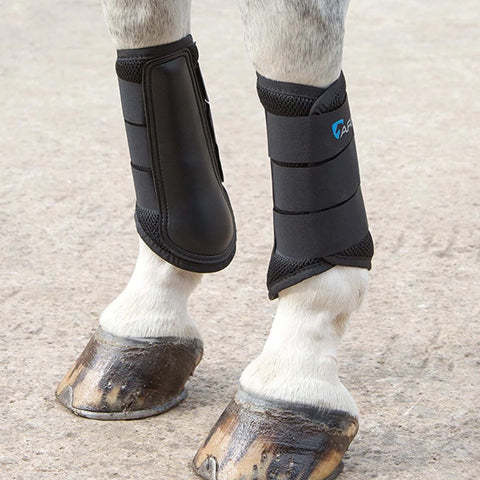
What are horse brushing boots?
Horse brushing boots are used to protect your horse’s lower legs from potential knocks or injuries caused by the opposite leg or hoof. In brief, they protect the legs from ‘brushing’ injuries during fast pace activities such as galloping or jumping.
Brushing injuries can also occur in the field, which is why some horse owners choose to add brushing boots to their horse’s legs before turnout.
Take a look at our collection of horse brushing boots today and discover a wide variety of choice.
Tendon Boots
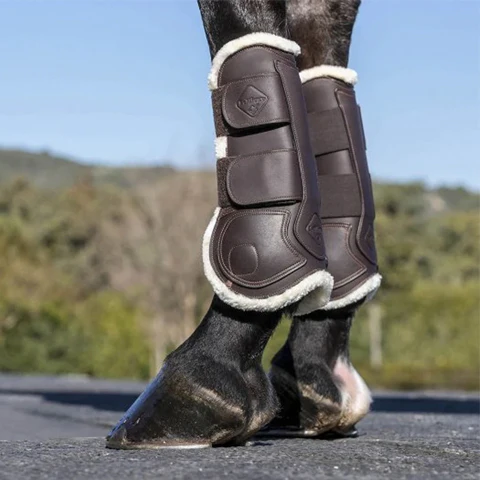
What are horse tendon boots?
As the name would suggest, horse tendon boots protect the tendon bone. Tendon boots are placed on the horse’s front legs to protect the tendon bone from the back hooves – without protection the rear hoof could cause damage. For example, when a horse lands after a jump they bring their back hooves forward on after impact – this is why these horse boots are popular with show jumpers.
Shop our horse tendon boots here: Tendon Boots
Fetlock Boots
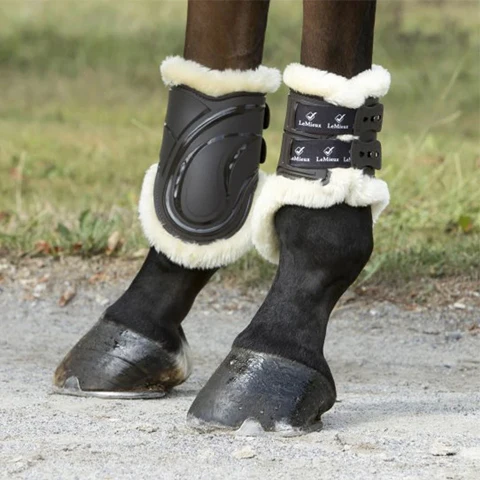
What are fetlock boots used for?
Fetlock boots are used on the hind legs to prevent brushing injuries and knocks on the horse’s fetlock bone. They are usually hard shelled to protect against strikes from the opposite leg, however they can come in various other materials too. Horse fetlock boots are a popular choice amongst showjumpers when tight turns and high jumps are involved.
Shop horse fetlock boots here: Fetlock Boots
Travel Boots
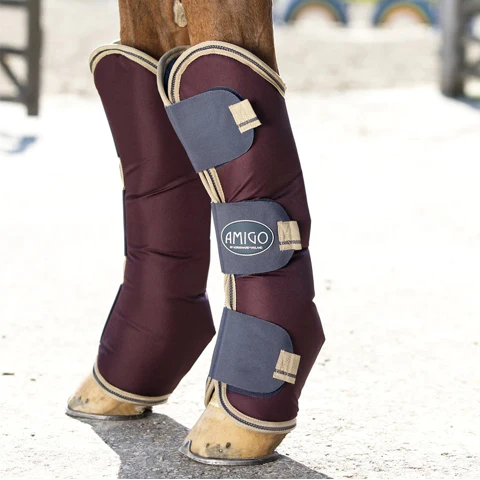
What are horse travel boots used for?
Travel boots, as the name suggests, are essentially equine boots that your horse wears to travel in. They are usually heavily padded and they often cover a large proportion of the horse’s leg for optimum protection from knocks or scrapes. Horse travel boots can be placed on all four legs (although the shape varies between front & back). Using a pair of travel boots is a great way to protect your horse from knocks or injuries when on the move in a horsebox or trailer.
Take a look at our large selection of travel boots here: Travel Boots
Stable Boots
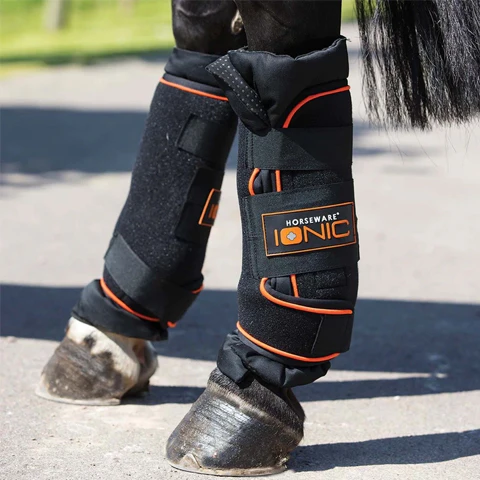
What are stable boots for horses?
Stable boots are a great way to protect and support your horse’s legs when they are stalled in their stable. Stable boots are also a great way of providing your horse with extra support after strenuous exercise. You can often get stable boots that have the additional benefit of cooling agents integrated into the design such as cold water boots or magnetic horse boots.
Additionally, stable boots can also be used to prevent your horse getting dirty before a big event, or simply to add protection if they are notoriously clumsy.
Shop our stable boots today: Stable Boots
Turnout Boots
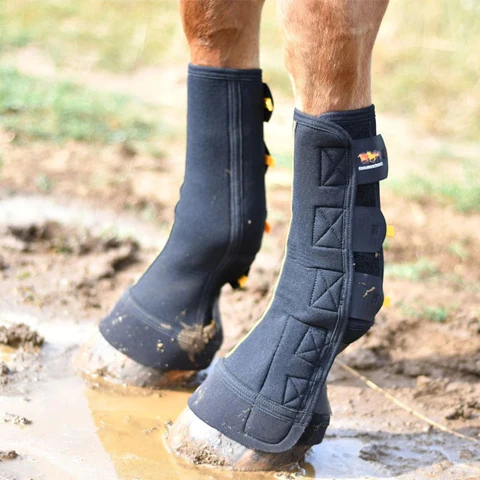
Why do horses wear turnout boots?
Turnout boots are great if you have a horse that can get a little silly in the paddock. Turnout boots are there to provide your horse with added protection against strikes and knocks from their own legs, or other horses if they are turned out in a herd. These boots are usually crafted with breathable and lightweight materials that keep your horse’s legs cool and dry, whatever the weather. Many boots also repel mud – ideal for horses that suffer with mud fever.
What are mud fever boots?
Mud fever, also refereed to as pastern dermatitis, is a skin condition that generally affects the horse’s legs. The number one cause of mud fever is muddy conditions which is why the disease is prevalent during cold and wet weather conditions. Symptoms of mud fever in horses is generally characterised by flaking skin, scabs and sores around the pastern and heel.
Designed like a sock, mud fever boots, are a very popular choice of turnout boot, especially when fields become swamped with bad weather and rain. Mud fever boots, as the name suggests, limit the amount of mud coming into contact with your horse’s legs, therefore allowing them to stay clean and dry.
Take a look at our turnout boots here: Turnout Boots
Cross Country Boots
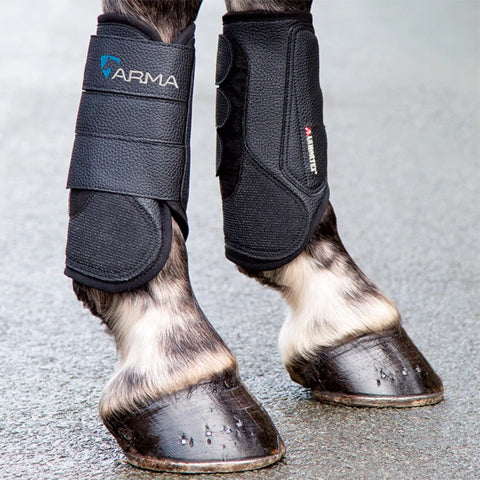
What boots do horses wear for cross country?
Cross country boots are essentially a brushing boot with increased protection due to the intensity of the discipline they are designed for. Cross country boots offer superior protection against lower leg knocks, particularly useful in the event of a direct impact, i.e. with a solid fence. Robust in their design, horse cross county boots will absorb shock through technical materials such as carbon fibre, increasing the protection for your horse’s legs.
Cross country boots often come with additional features such as water resistant material (ideal for water complexes), and air vents to keep the air flowing during a cross country run.
Browse our cross country boots here: Cross Country Boots
Dressage Boots
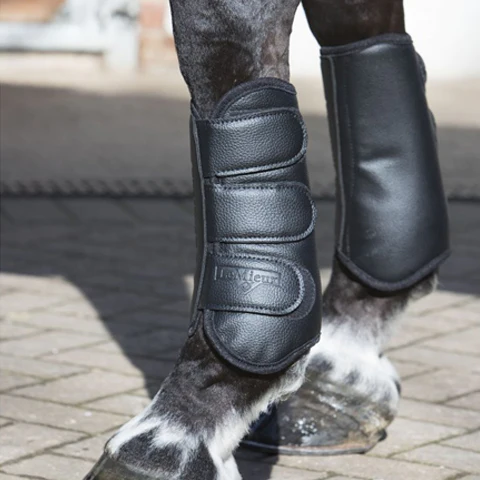
What are dressage boots for horses?
Concentrating on flat work? The dressage boot is simply there to protect your horse’s tendons and ligaments. These boots are ideal if your horse has a tendency to overreach. Often refereed to as support boots, they are very similar to a bandage in a sense they support the tendons and ligaments whilst on the flat.
Can horses wear boots in dressage?
It is important to note that horse dressage boots are only intended for training and use in the warm-up arena. Dressage boots are not permitted during competitions – if horse boots are used during a competitive dressage setting, you can risk elimination.
Shop our dressage and support boots here.
Over Reach Boots
What are over reach boots and what do they protect?
Over reach boots for horses, often referred to as bell boots, are designed to go over your horse’s front hooves to protect the heel, pastern and coronet band from the back legs. Bell boots may be particularly useful with young horses that are still a little clumsy and unbalanced with their legs, or for use on excitable horses that are prone to injury in the field.
Take a look at our range of over reach boots here.
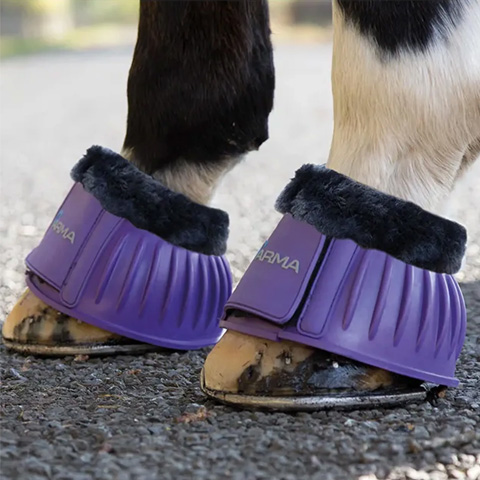
With a huge variety of horse boots available on the market, it is sometimes tricky to know which type your horse needs. Here at R&R Country, we stock a huge variety to suit a range of equestrian disciplines.
If you need some advise on horse boots, please contact our saddlery department for some free and friendly advice.

